Imagine a village so beautiful it’s been recreated halfway across the world. That’s Hallstatt – lakeside treasure and one of the most visited places in Austria. Its pastel 16th-century houses, narrow lanes, and shimmering lake have made it so famous that China even built its full-scale replica. But beyond its iconic viewpoint, which floods Instagram and TikTok, lie authentic moments. There are countless things to do in Hallstatt that reveal its rich culture and authenticity. Let’s go beyond the famous viewpoint and crowds to learn why this little village is far more than just a pretty picture.
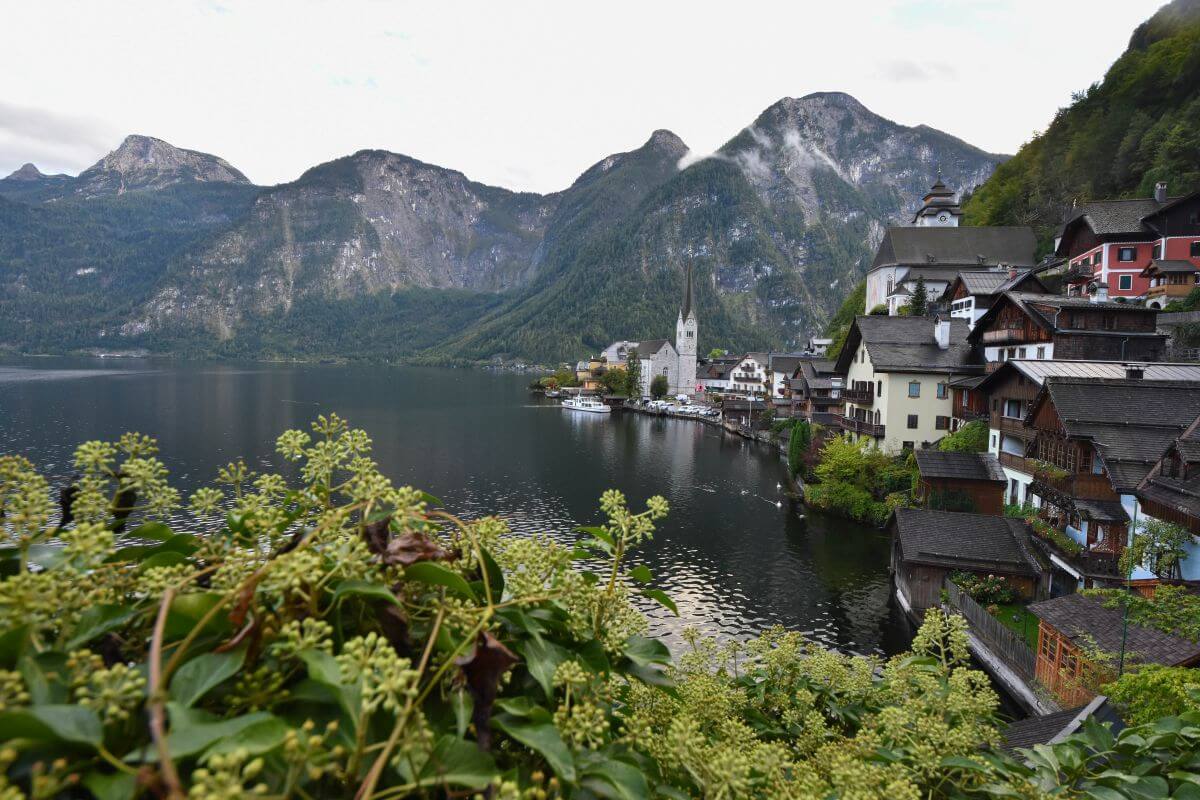
Where exactly is Hallstatt?
This tiny village sits quietly between the still waters of Lake Hallstatt and the dramatic Dachstein massif. It belongs to the district of Gmunden, in the state of Upper Austria. You can find it halfway between Salzburg and Graz, along the national road connecting these cities.
Part of a UNESCO Treasure
In 1997, UNESCO added this alpine village and its surrounding landscape to the World Heritage List as part of the Hallstatt-Dachstein/Salzkammergut Cultural landscape. According to the official UNESCO website, the region has shown a continuous human presence for over 2,500 years. The area combines breathtaking alpine nature with a deep human history shaped by salt mining, which brought early prosperity to the region.
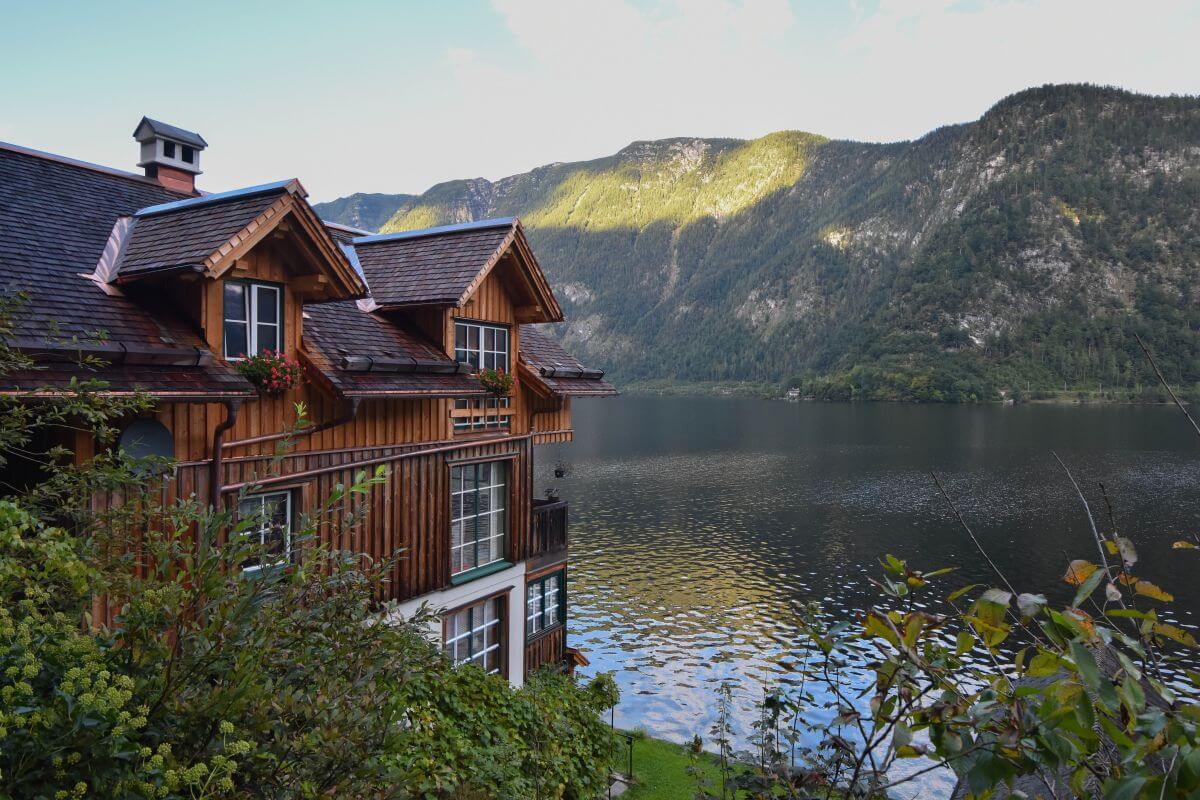
The landscape itself demonstrates why UNESCO has designated it as a site of outstanding universal value.
About our experience
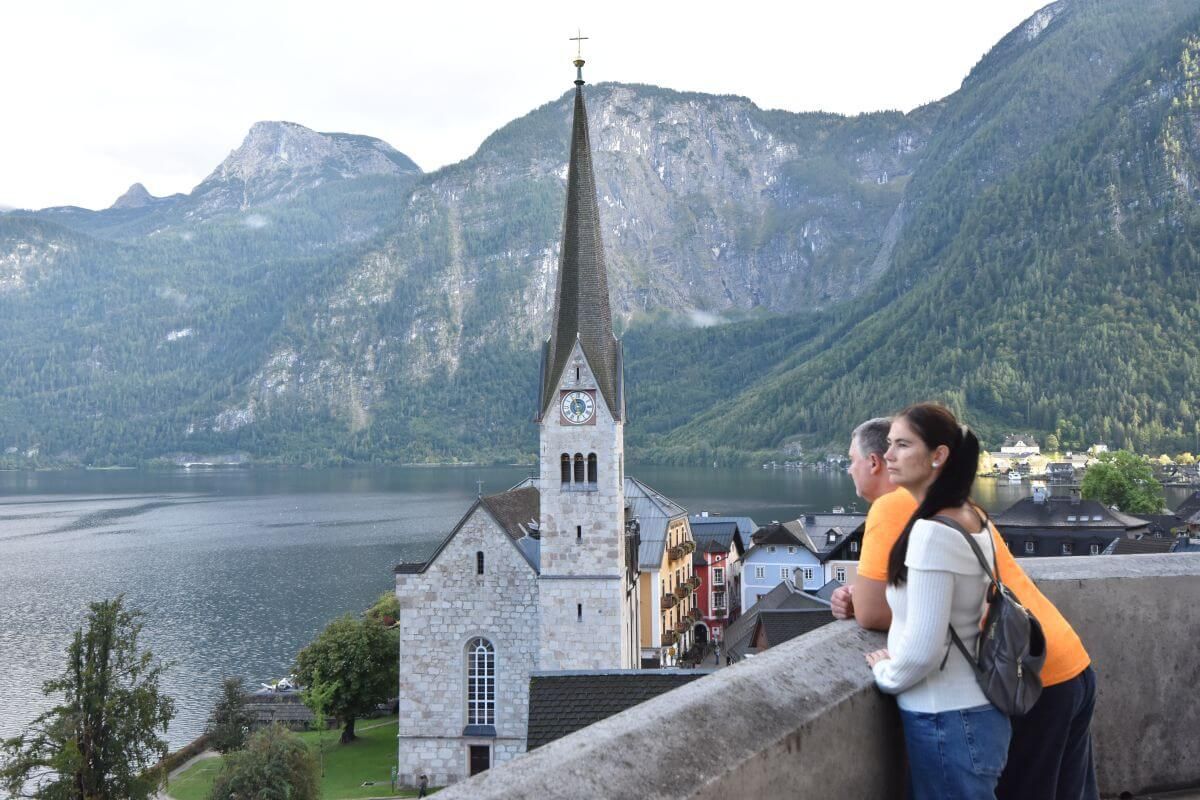
We arrived in Hallstatt with one goal – to stay overnight and to experience its charm without the crowds. We already knew about the problem of overtourism. Friends had warned us that during peak season, this fairytale alpine village can feel more like a theme park. Narrow lanes overflow with tourists, and parking spots closer than a mile away are nearly impossible to find. That’s why we timed our visit for mid-September 2025, arriving later in the day in hopes of a calmer experience after the rush.
Then came the twist. Rain fell for hours, the mountains disappeared into thick clouds, and news we didn’t expect changed everything. On the day of our visit (September 14, 2025), we discovered the entire funicular car system was closed for reconstruction from 1 September 2025 until June 2026. The Hallstatt cable car, the Skywalk, and the famous salt mine were all shut, and even hiking access to the Skywalk was blocked. The closure could have ruined our trip, but instead, we adjusted our plans. If you’re visiting between October 2025 and June 2026, don’t be frustrated – adjust your plans. Sometimes, the best travel moments happen when plans fall apart.
Things to do in Hallstatt during the funicular closure

Don’t worry if you visit Hallstatt between October 2025 and June 2026 while the Skywalk and the main salt mine are closed. Even with major attractions shut, there are still plenty of wonderful things to do in Hallstatt. The village takes just 15 minutes to walk through, but every corner feels like a postcard. Wander its gorgeous streets, enjoy the still reflection on the lake, visit the small museum, and the nearby attractions that tourists overlook.
1. Tours Salt Mine

One of the strongest reasons why UNESCO gave Hallstatt its title is salt. According to the UNESCO website, as early as the Middle Bronze Age (around 2000 BC), people harvested brine and evaporated it. Later, in the late Bronze Age, they began digging for rock salt deep below the surface. Salt mining continued through Roman times and medieval times. From the 16th century onward, Austria’s crown tightly managed the forests that fed the mining operations.
As of October 2025, the Salzwelten Hallstatt complex, which is home to the oldest salt mine in the world, is closed until summer 2026. During the closure of this salt mine, funicular, Skywalk, and high valley, you can tour the Altaussee salt mine instead. The Altaussee salt mine is Austria’s largest active salt mine. It even played a role during WWII when Nazi forces hid thousands of stolen European artworks deep in their tunnels. Local miners risked their lives to protect them.

GOOD TO KNOW:
- Right now, the only way to visit the salt mine is via the Altaussee salt mine tour until summer 2026. A daily shuttle leaves from the village at 2 PM (meet at the bus terminal at 1:50 PM), returning around 5:30 PM. This all-inclusive tour includes transport and mine entry. Alternatively, you can reach the Salzwelten Altaussee by car or taxi (approximately 3 km above Altaussee).
- At Altaussee salt mine, you’ll walk roughly 2.5 km underground in tunnels lined with red-orange salt rock. You’ll see the Barbara Chapel carved from salt, salt-leaching chambers, and slide down the original miners’ slides once used for transport.
- The tunnel temperature is between 7-10°C, so bring warm clothes and sturdy shoes.
- As of October 2025, the all-inclusive salt mine tour costs €44 for adults and €24 for children aged 4-15.
- The guided tour lasts about 90 minutes, and children under 4 years old can’t join the tour.
2. World Heritage Museum

An ideal stop on a rainy day or when the cable car is closed.
If you’re searching for meaningful things to do in Hallstatt during the cable car reconstruction period, the World Heritage Museum is an absolute must. Located steps from the lake, this small museum brings 7,000 years of the village’s history to life. The museum traces how salt (‘white gold’) built the foundations of the town’s fame, and how generations of people shaped its culture. The World Heritage Museum explored daily life in ancient times through interactive displays.
Inside, you’ll find treasures from the ancient salt mines, beautifully crafted pottery, personal ornaments, and Bronze Age tools. Multimedia exhibits and visual reconstructions make this a fascinating stop for families, historians, and anyone curious about how humans built their lives in these mountains.
GOOD TO KNOW:
- The museum is easy to reach – just 2 minutes from the ferry station and ten minutes from the bus terminal. It’s about a 15-minute walk from carpark P1, a 10-minute walk from carpark P2, and a 40-minute walk from carpark P3/P4.
- As of October 2025, tickets for the World Heritage Museum are €12 for adults, €9 for students, and €25 for families. Seniors and guest card holders receive discounts.
- The World Heritage Museum is open most days between 10 AM and 6 PM in summer, with reduced hours in winter. Check slightly reduced opening times in winter on their official website.
3. Historic Market Square
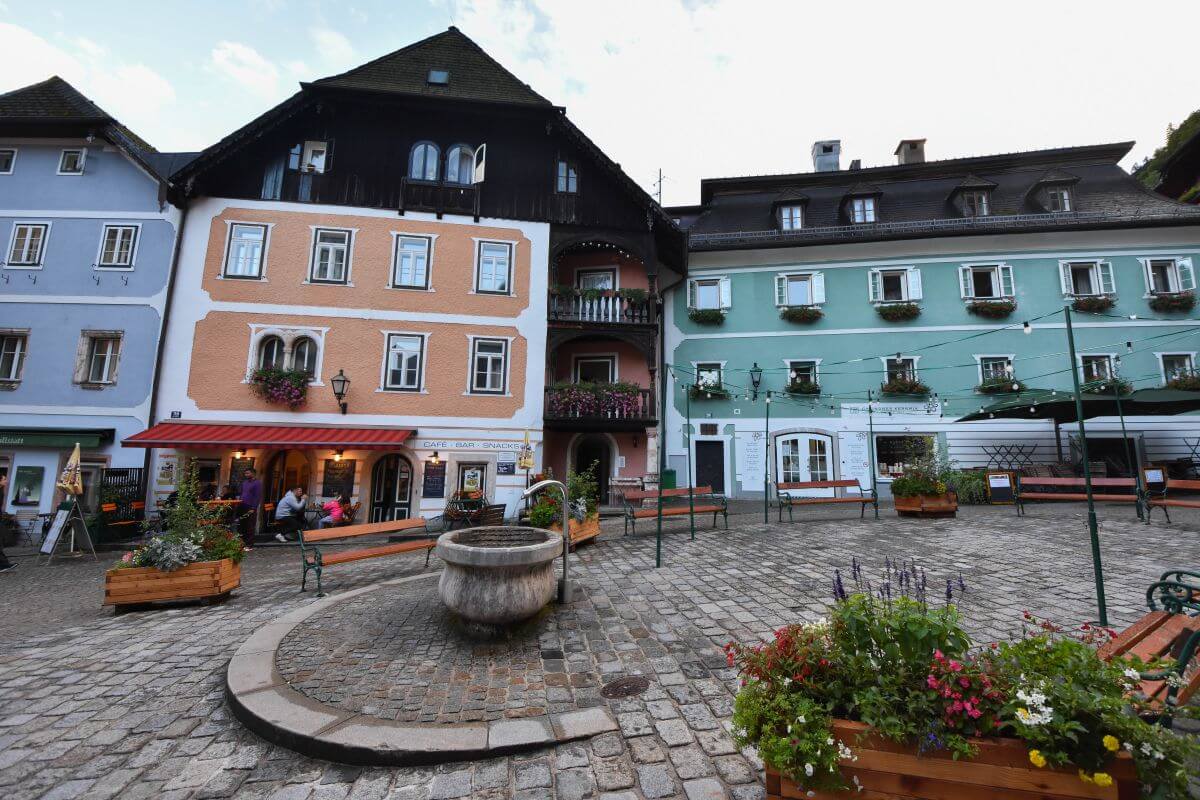
At the centre of Hallstatt’s old town lies the Historic Market Square. This compact piazza with colourful alpine houses has always been the heart of village life. According to the village’s official website, its origin stretches back to the 14th century, following the acquisition of market rights. The square was once bustling with villagers exchanging goods and salt traders who gathered here to exchange their ‘white gold’.
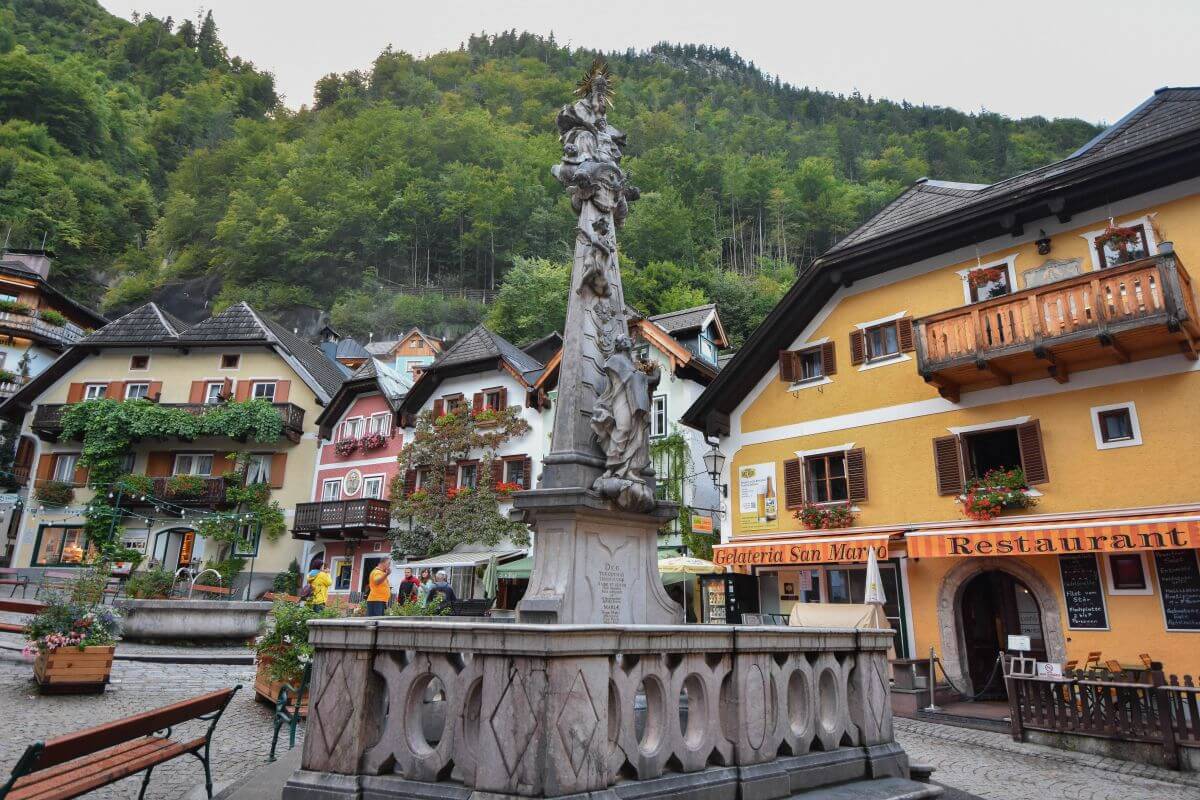
Today, brightly painted houses line the square, and their wooden balconies are draped with flowers in summer. In the middle stands the Holy Trinity Columns, donated by grateful salt traders after the plague. But just six years later, the monument also witnessed tragedy. In 1750, a fire spread from the baker’s house (today’s Café Derbl). It reduced most of the square to ashes, costing four lives and destroying 35 houses and the old Habsburg residence. According to the village’s official website, the damage totalled more than 32,000 guilders – a fortune for that time.
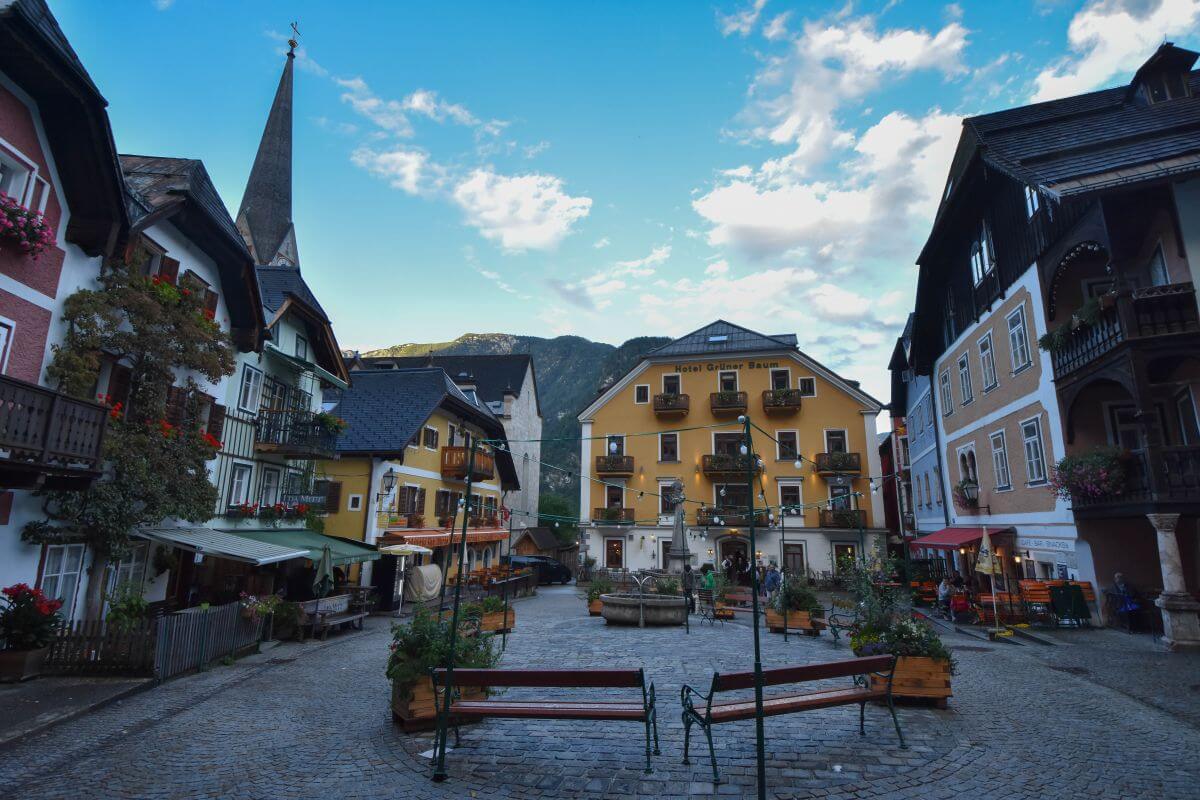
From these ashes rose the colourful square you can admire today. On one side, you’ll find cosy cafes, restaurants, and shops run by locals. On the other side, private homes overlook the lively scene, their pastel walls glowing softly in the mountain light.
4. Protestant Church
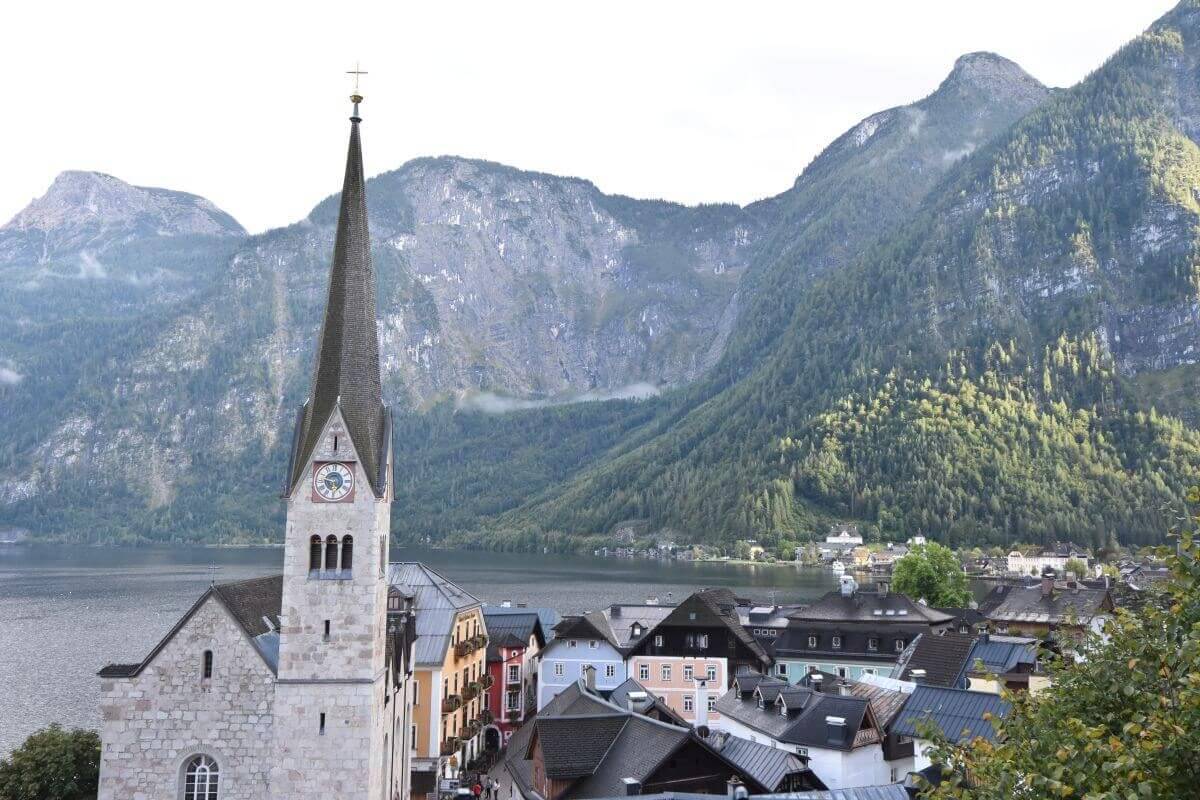
The church everyone knows but few truly understand. This Protestant Church is one of the most recognizable landmarks, yet few tourists know its story.
You’ve seen it a thousand times in photos, but do you know why this church means so much to the people who live here? This elegant house of God holds far more than scenic charm – it’s a symbol of freedom.
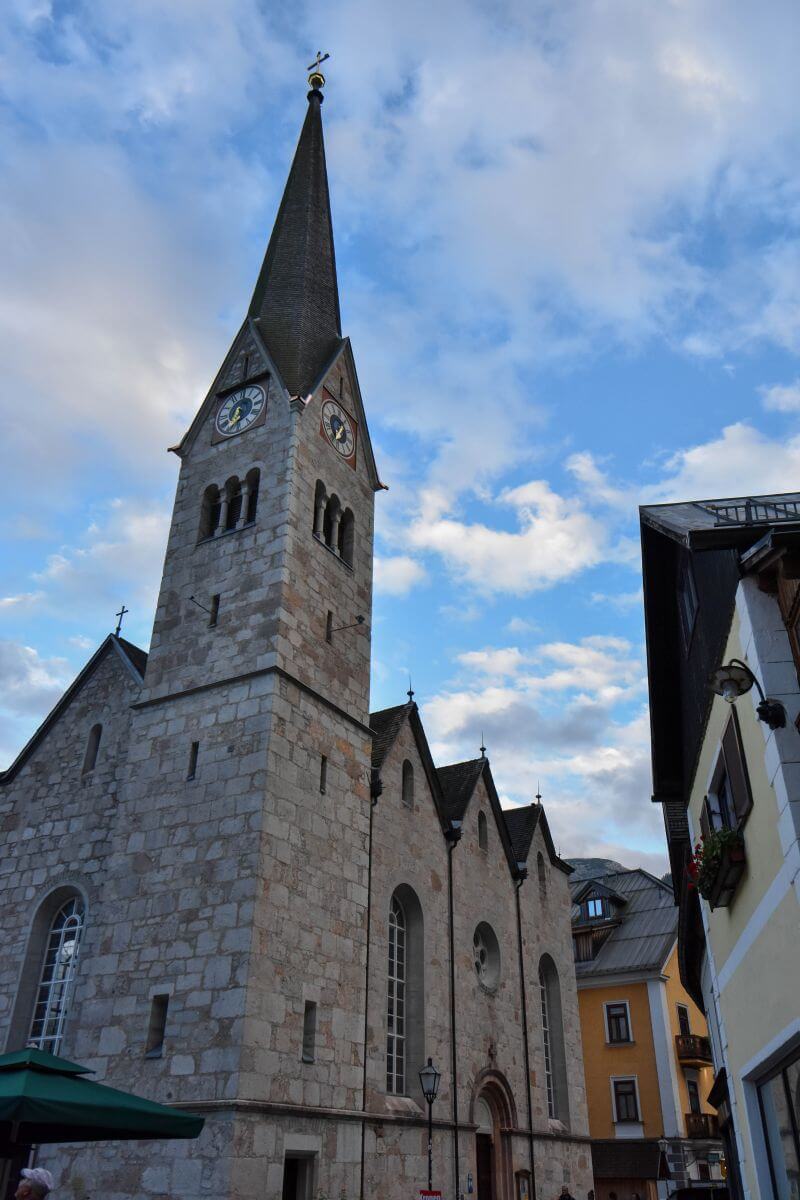
When Martin Luther’s teachings spread through this region in the 16th century, local miners and miners quietly converted. For centuries, followers of Luther’s teachings worshipped in secret. In 1781, Emperor Joseph II issued the Edict of Tolerance, granting them freedom of religion. Just four years later, the community’s first prayer house appeared. Soon after, only after five years in construction, the current Protestant Church rose near the water, becoming their spiritual home. Today, it remains a vital part of the community, and locals gather here for worship.
5. Hallstatt Promenade
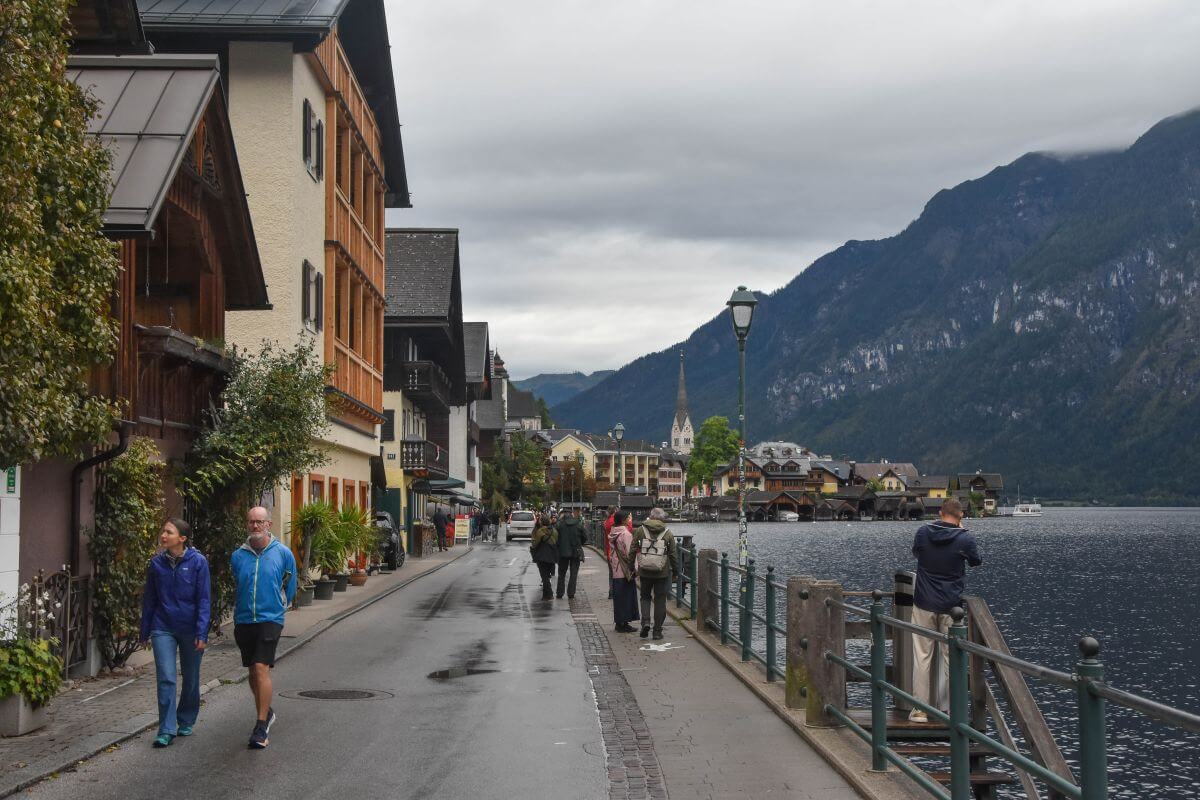
Did you know that the lake promenade once didn’t exist? Before 1890, the village was cut off from the world, reachable only by boat or mountain trail. For centuries, that was life here. When the first short road from Gosaumühle was finally completed, it stopped just before today’s Hotel Kainz. All goods, every letter, and barrel had to be reloaded by hand onto carts or boats to reach the centre.
According to the official website, it took until 1890 for the bold decision to extend the road through the village to the Lahn district. Seven houses built on stilts over the lake were demolished, and the old ‘Panzlbrücke’ bridge vanished forever. Blasting rock from the steep mountainside, workers carved out what became the Seestraße, the narrow road that still hugs the lake’s edge today. This new road transformed daily life, linking the isolated settlement with the outside world for the first time.
Then came the 20th century, and with it, cars and crowds. By the 1930s, vehicles were allowed along the lakeside, and parking began to fill every available space. In 1958, locals decided to protect their village and built the new tunnel and bypass, which takes vehicles underground. The old lakeside road, where you stroll today, became a pedestrian promenade.

As you walk it, picture life before the road, when every delivery, guest, and goodbye began on the water.
6. Ossuary

Looking for unique things to do in Hallstatt beyond the postcard views? Among the most extraordinary attractions is the Ossuary, also known as the Charnel House. Hidden beside the Catholic cemetery, this tiny chapel is one of Europe’s most unusual sacred places. Dating back to the 12th century, this chapel holds 1,200 skulls, 610 of them hand-painted, according to the official website.
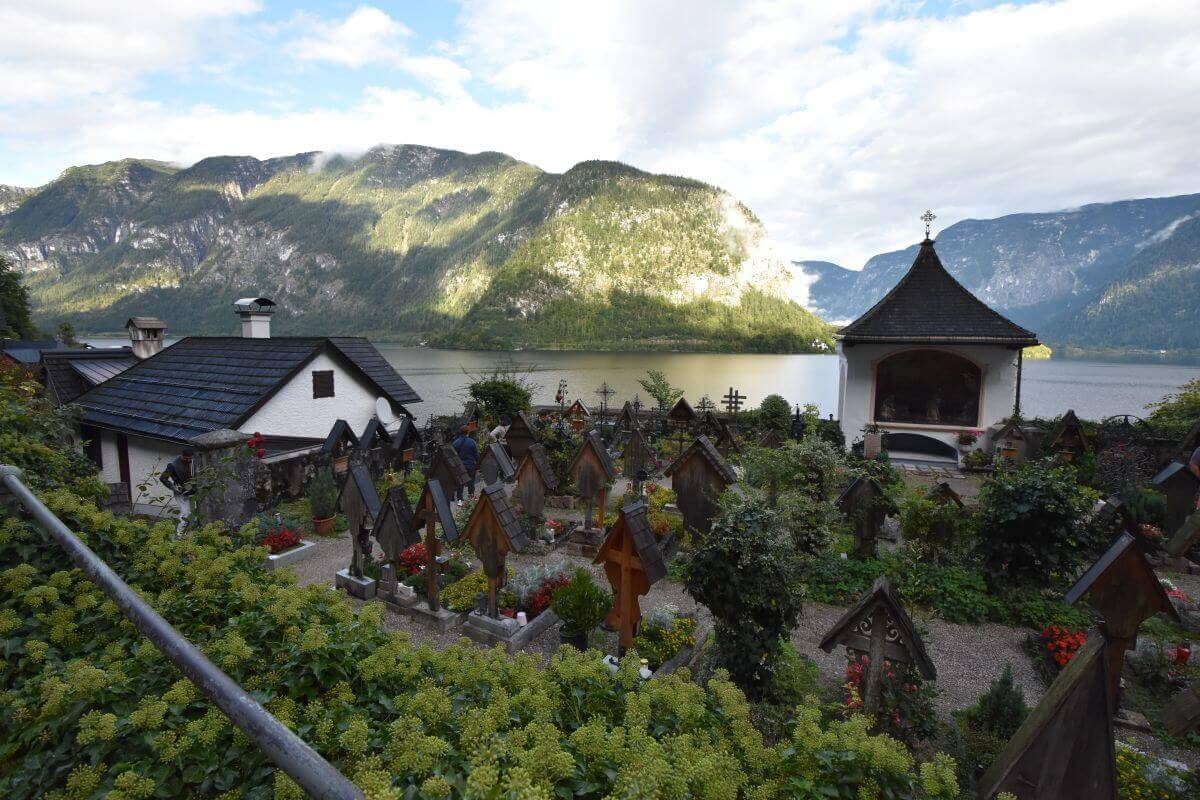
For centuries, this Alpine village faced a simple problem: no room to bury its dead. The cemetery was too small, and the mountains offered no space to expand. Due to the limited space, graves were reopened after about 10-15 years, according to the official website. Families carefully removed the skulls, naturally bleached them under sunlight and moonlight. After that, they decorated them with delicate hand-painted motifs. Every brushstroke had meaning: ivory for life, oak for glory, laurel for victory, and roses for love.

Each skull bears a name, family mark, and the day of death. Beneath the main cross lie two skulls marked with a snake – symbolising sin and redemption. The skulls resting on books once belonged to priests, their devotion still honoured centuries later. This unique custom began around 1720 and continued until 1955. The last skull (the one with a gold tooth), belonging to a woman who died in 1983, was added in 1995 at her own request. Today, cremation has replaced this practice, but this quiet chamber remains a reflection of respect, art, and devotion passed through centuries.
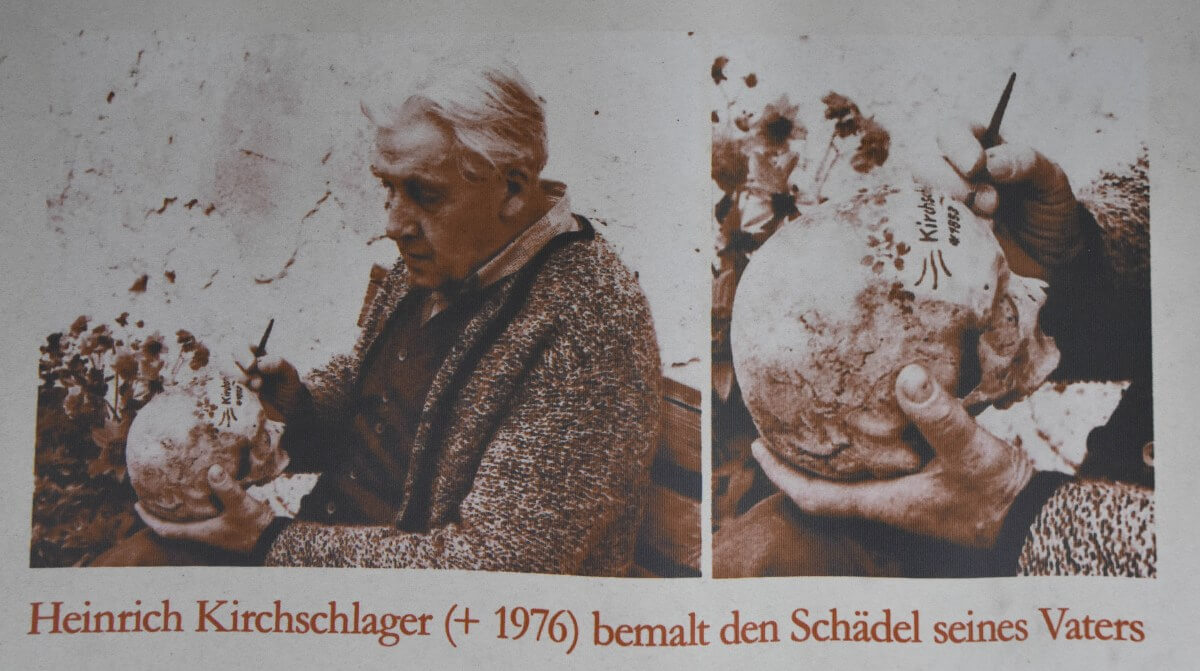
7. Catholic Parish Church
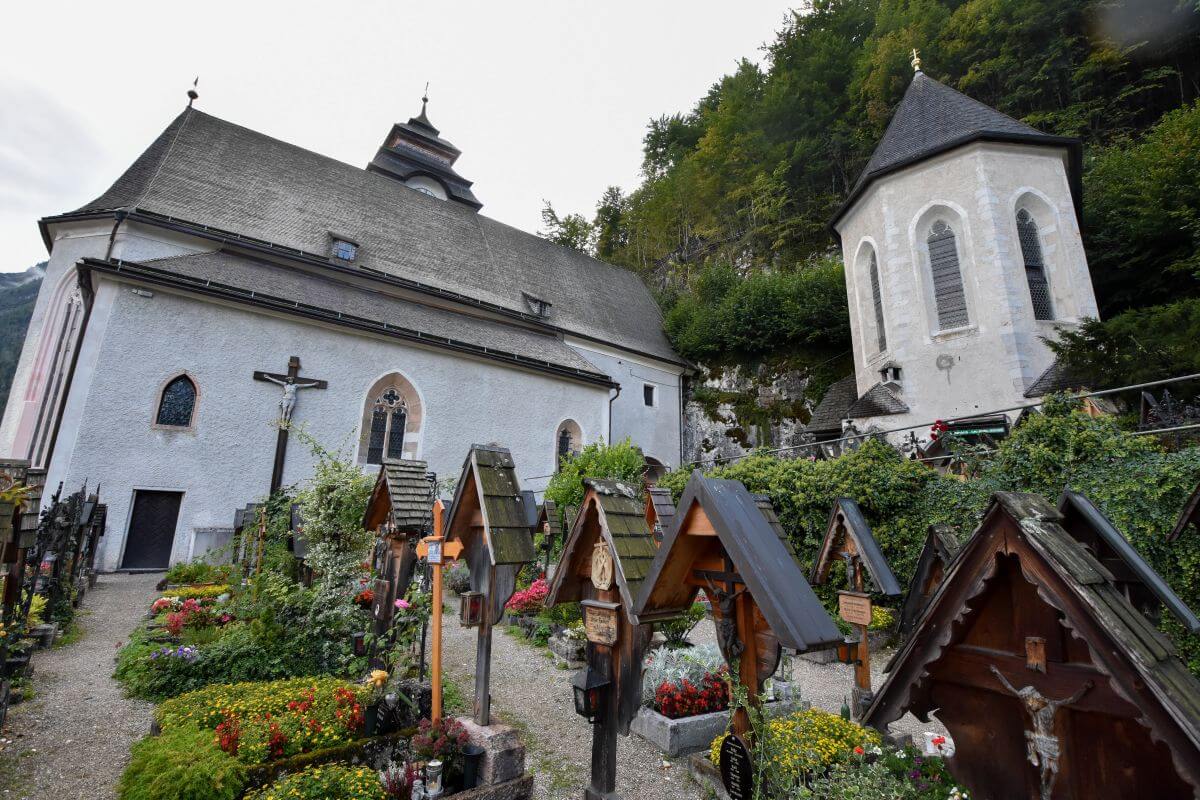
Just steps from the Ossuary stands the Catholic Parish Church, one of the most extraordinary historical sites in Austria. Built on the remains of a Roman fort, high above the lake, its oldest part – the tower- dates back to the 12th century. In 1320, after the village gained market rights, a second Romanesque church stood here. Later, builders extended it over steep rock, completing the present Gothic church around 1505.

Inside, miners once prayed before the magnificent winged altar by master craftsman Leonhard Astl. Founded by local miners who built the village’s wealth, this precious altar was the artistic treasure of the Salzkammergut.
FUN FACT:
Did you know that in 1987, two Italian thieves stole four precious Gothic paintings from the small altar? They vanished without a trace into Europe’s black market. It took Italian police 30 years to find them in a warehouse, according to the village’s official website. Since 2018, they’ve been home again, restored and displayed again.
8. Panoramic Viewpoint in Hallstatt
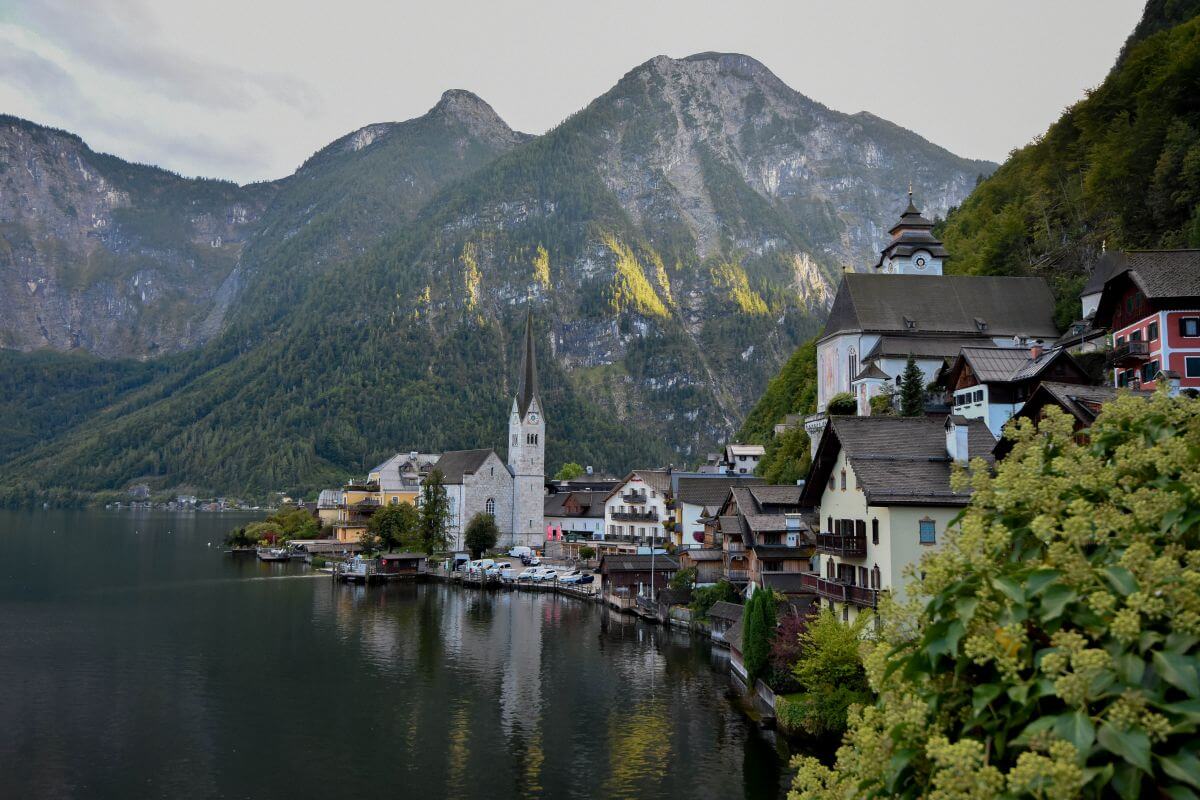
Ever wondered where that world-famous postcard view of the village comes from? It’s the Aussichtspunkt Hallstatt, a small viewpoint located at the north end of the village that defines this UNESCO village. This lookout point frames the church tower, lake, and mountains in one unforgettable scene. It’s the most photographed spot in the region, and visiting this viewpoint is among the top things to do in Hallstatt. However, the secret lies in timing.
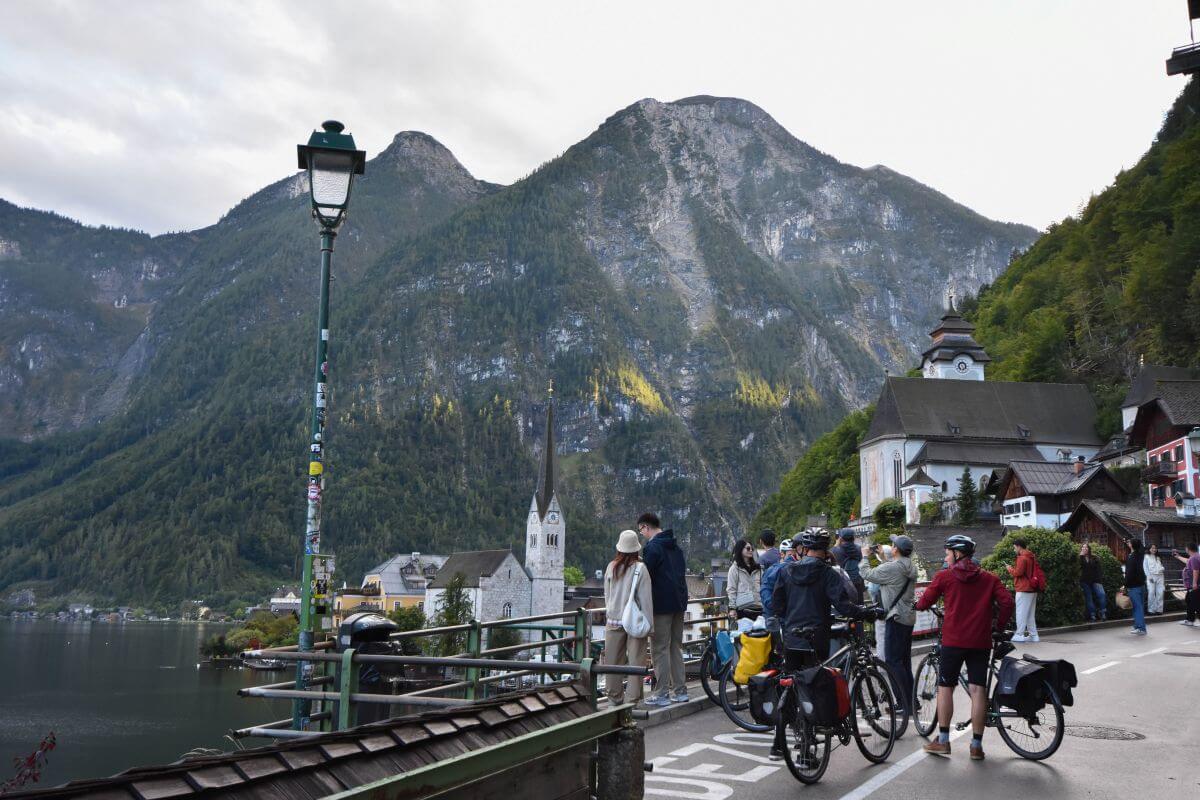
TIP:
Arrive early (before 9 AM) or just around sunset to experience it in peace. Midday crowds are overwhelming, and you’ll struggle to get a clean shot from this small photo spot. If you’re staying overnight, walk here after the rain or during golden hour when the light hits the lake. The walk from the centre takes only 15 minutes, and the path is flat and easy to walk. Wait until the light softens, and you’ll understand why people travel across the world for this view.

9. Scenic boat tour on Lake Hallstatt
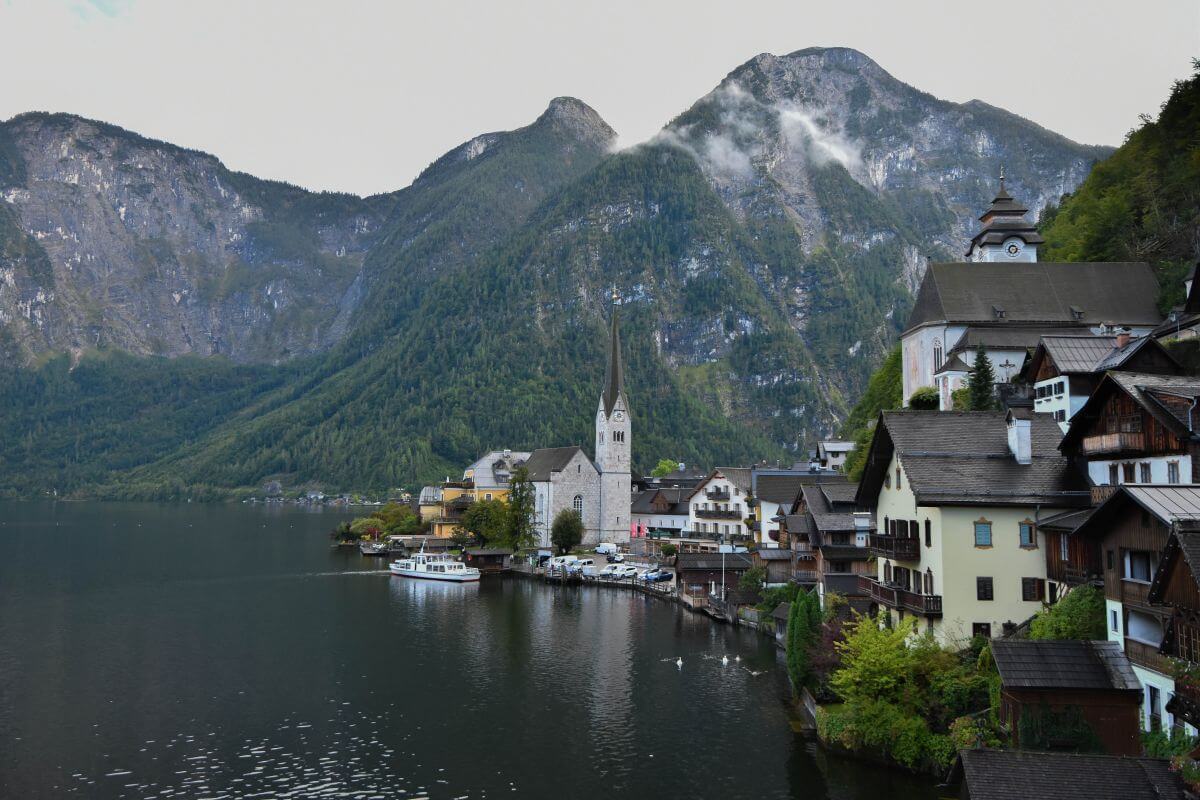
What’s better than seeing Hallstatt from land? Seeing it from the water. A scenic boat tour on the lake lets you experience the village the same way salt traders once did centuries ago: by boat. Before roads existed, boats carried salt down the Traun River, connecting this settlement with the world. Today, you can relive that tradition on a peaceful lake cruise that runs year-round. You’ll glide across crystal waters with panoramic views of pastel houses and the soaring Dachstein mountains. The main ferry connects the railway station and town daily, with round-trip cruises exploring both the north and south shores. Prices and times change seasonally, so don’t forget to check the official boat service website before your visit.

TIP:
You can also rent an electric or pedal boat – perfect for families and couples looking for peace. No motorboats are allowed, so the lake stays pristine and quiet.
10. Hiking around Hallstatt
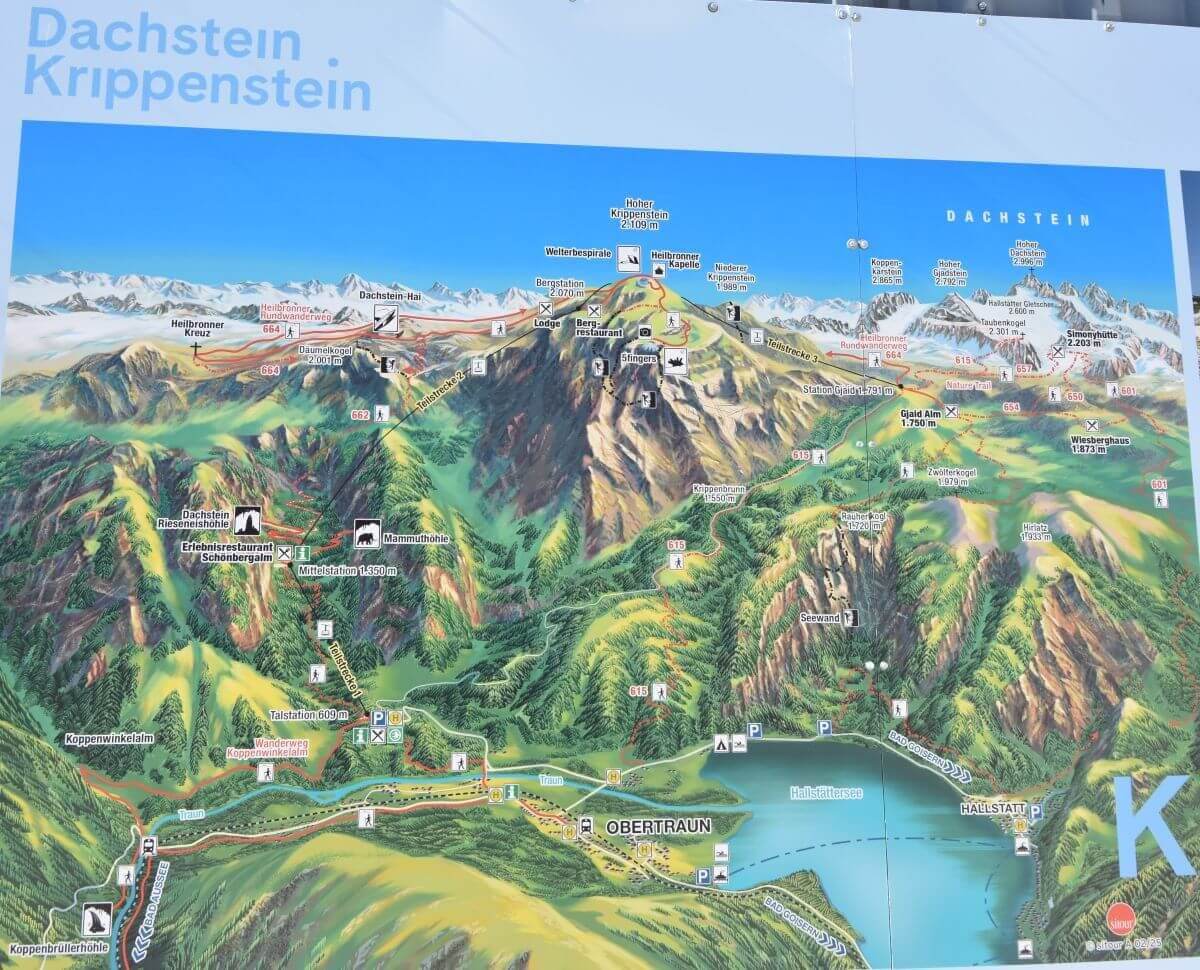
Hiking is one of the most peaceful things to do in Hallstatt, especially now that major attractions like the Skywalk and funicular are closed until summer 2026. We stayed overnight, planned to hike, but the weather had other ideas. Heavy rain soaked half of our first day, low clouds hid the peaks, and fading daylight kept us closer to the lake. The next morning, sunshine returned, but our time ran out. We left for Dachstein 5 Fingers, leaving behind plenty of trails for our next visit.
HIKING TRAILS:
If you have better luck, start with the Panorama Trail, a scenic 45-minute walk above the lake, which is perfect for beginners. This easy path offers open views of the village’s pastel houses and the towering Dachstein range. The World Heritage Circular Trail is a longer 2.5-hour loop through alpine forest, with scenic lookouts. It winds through quiet woodland and offers information boards explaining the area’s salt-mining legacy and UNESCO importance.
One of the region’s most beautiful natural spots is the Waldbachstrub Waterfall. This family-friendly trail takes about 2.5 hours round trip and rewards you with a stunning cascade tucked deep in the forest. This easy-to-moderate path, with benches and viewpoints along the way, is ideal for families and nature lovers.
GOOD TO KNOW:
There is some important news for hikers. From September 2025 to spring 2026, the Serpentine Path to the Salzberg, Skywalk, and Salt Mine is closed due to the construction of a new funicular. This means hikes to Plassen, Steingrabenschneid, and Glücksplatz Dammwiese are only possible via Echerntal Valley, which adds 60-90 minutes to your journey.
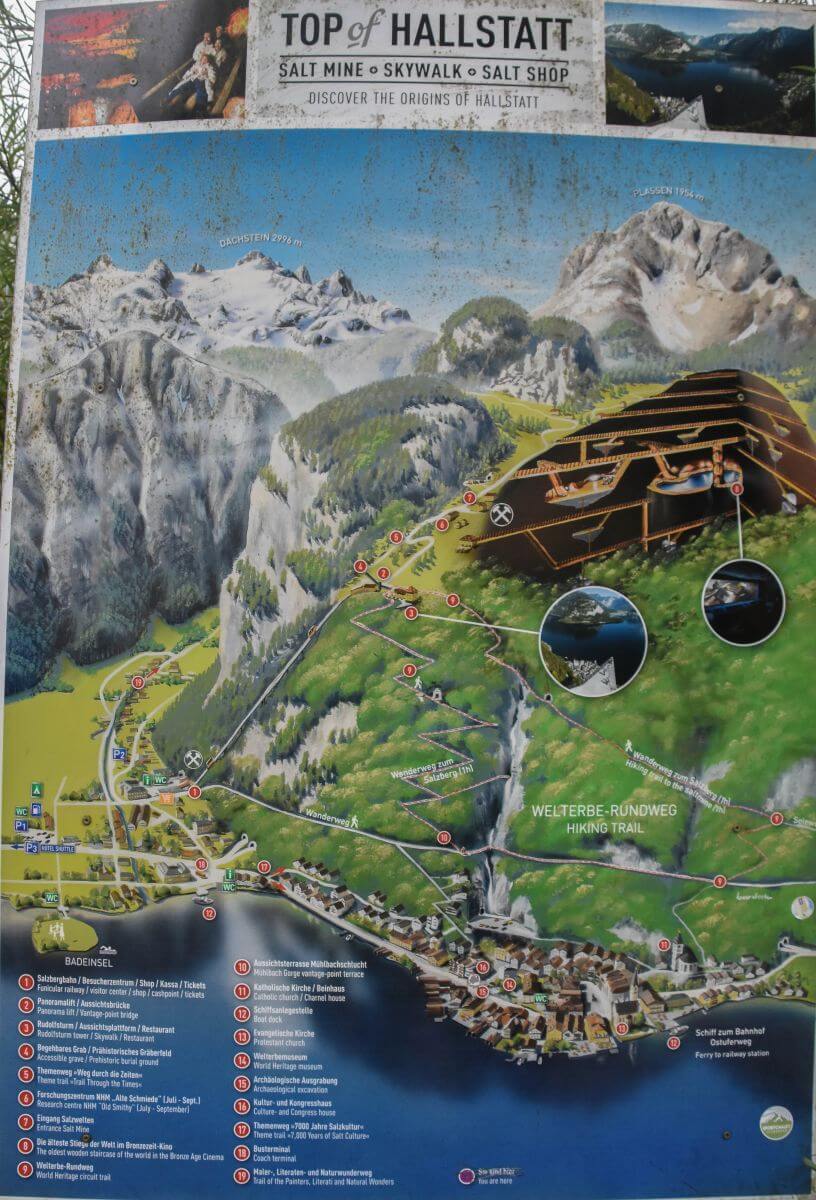
TIP:
Wear comfortable shoes, pack a light jacket (mountain weather changes quickly), and bring water and snacks. Most trails start directly from the village parking area.
11. Via Ferrata trails
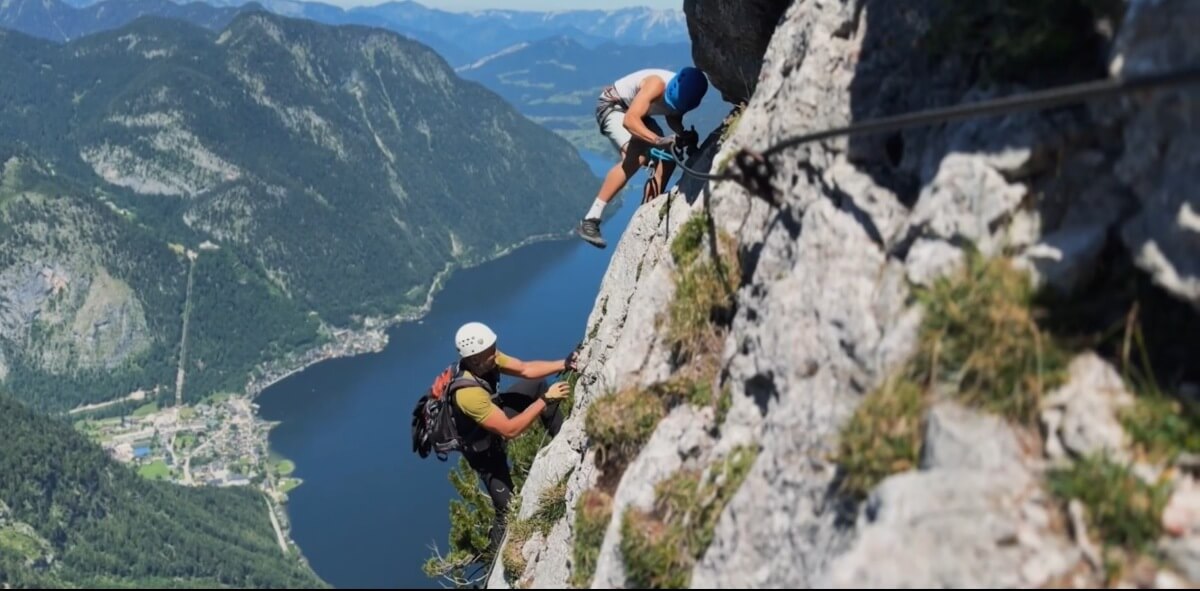
There are various ferrata to choose from, easy beginner paths, and thrilling vertical routes.
Looking for adventure beyond the lakeside strolls? Hallstatt’s via Ferratas are perfect for anyone eager to combine adrenaline with breathtaking scenery. Many first-time climbers choose Hallstatt because it’s safe, scenic, and its routes are designed for everyone. Routes are secured with steel cables, ladders, and steps drilled directly into the rock. You don’t need to be a professional climber; there are multiple ferratas with varying difficulties – check their official website for more information. Rent gear locally or join a guided tour with certified alpine guides in the area.
Other things to do in Hallstatt if you have more time – visit Dachstein
Dachstein
The Dachstein massif is the second-highest range in the Northern Limestone Alps, and its peaks soar over this UNESCO World Heritage region, encompassing both natural and cultural aspects. From Hallstatt or Obertraun, you can reach this alpine world via cable car. After that, you can spend hours or a full day exploring everything from caves to skywalks, via ferratas, trails, and breathtaking panoramas.
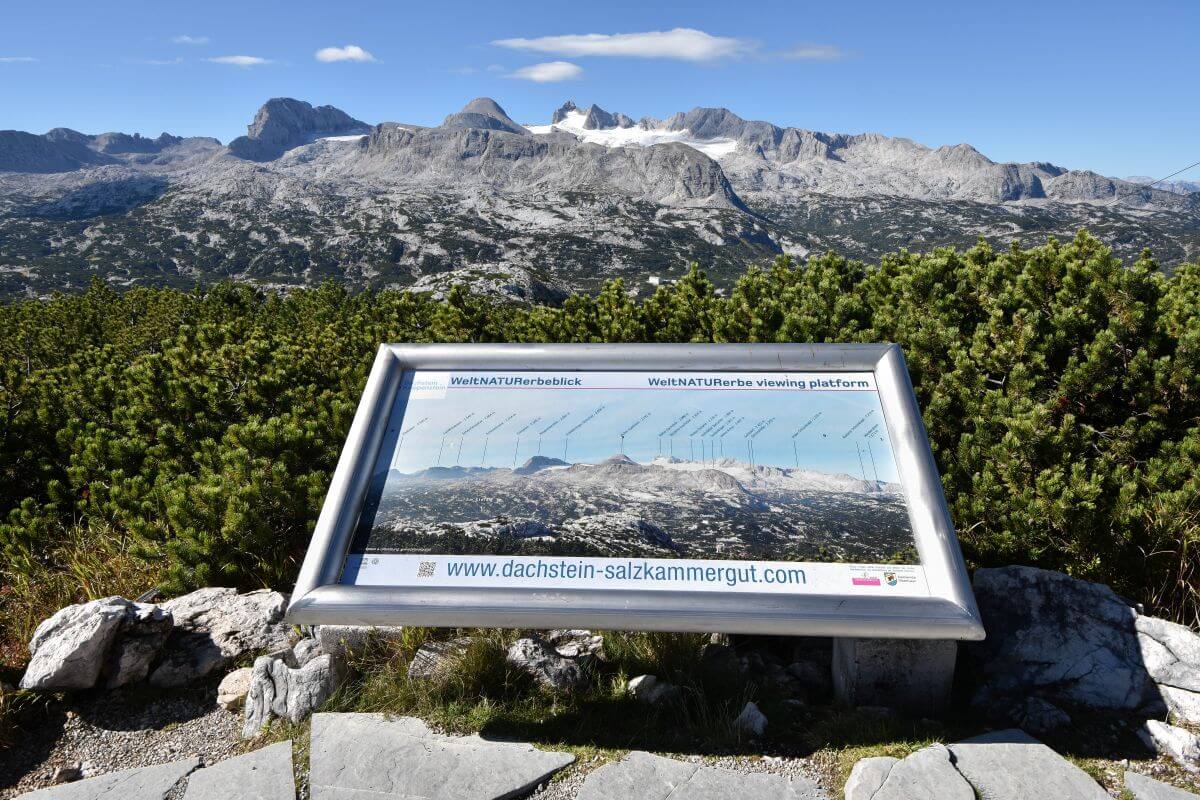
Dachstein offers some of the richest landscapes in Austria. If you’re building your list of things to do in Hallstatt, add this place to your itinerary. You will not regret it.
12. 5 Fingers viewing platform

Ever wanted to walk into thin air? The 5 Fingers platform stretches like a metal hand over a 400-m cliff of Mount Krippenstein, 2,100 m above sea level. Each ‘finger’ is about 4 m long and gives you a different perspective. From here, you look down over Lake Hallstatt, Bad Goisern, and the Gosaukamm mountain. The view is so beautiful that many tourists come just for this shot.
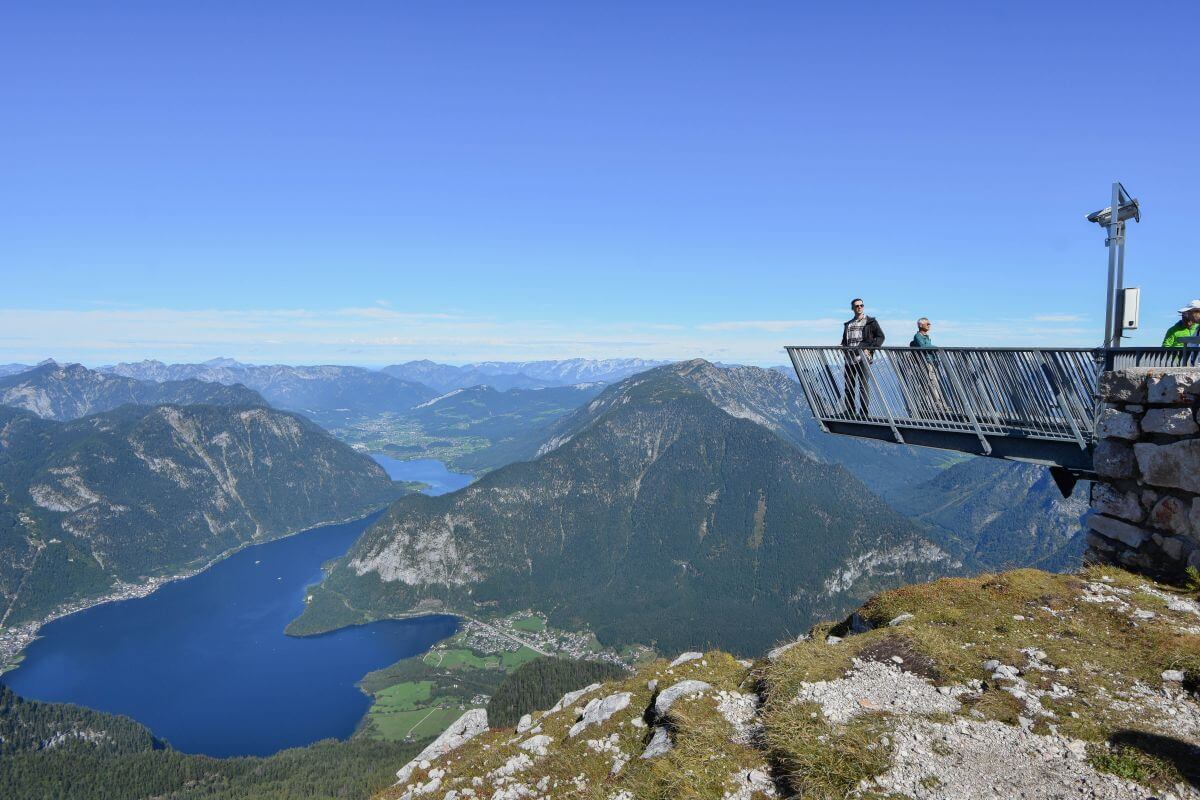
Each finger offers something different.
GOOD TO KNOW:
You can reach it via the Krippenstein cable car (station II), then a gentle 20-30 minute walk from the summit station. The route is well-marked, and the hike is easy, even for families. The 5 Finger Viewing platform is open for the summer season (May to November, depending on the snow), with cable cars running frequently.
TIP:
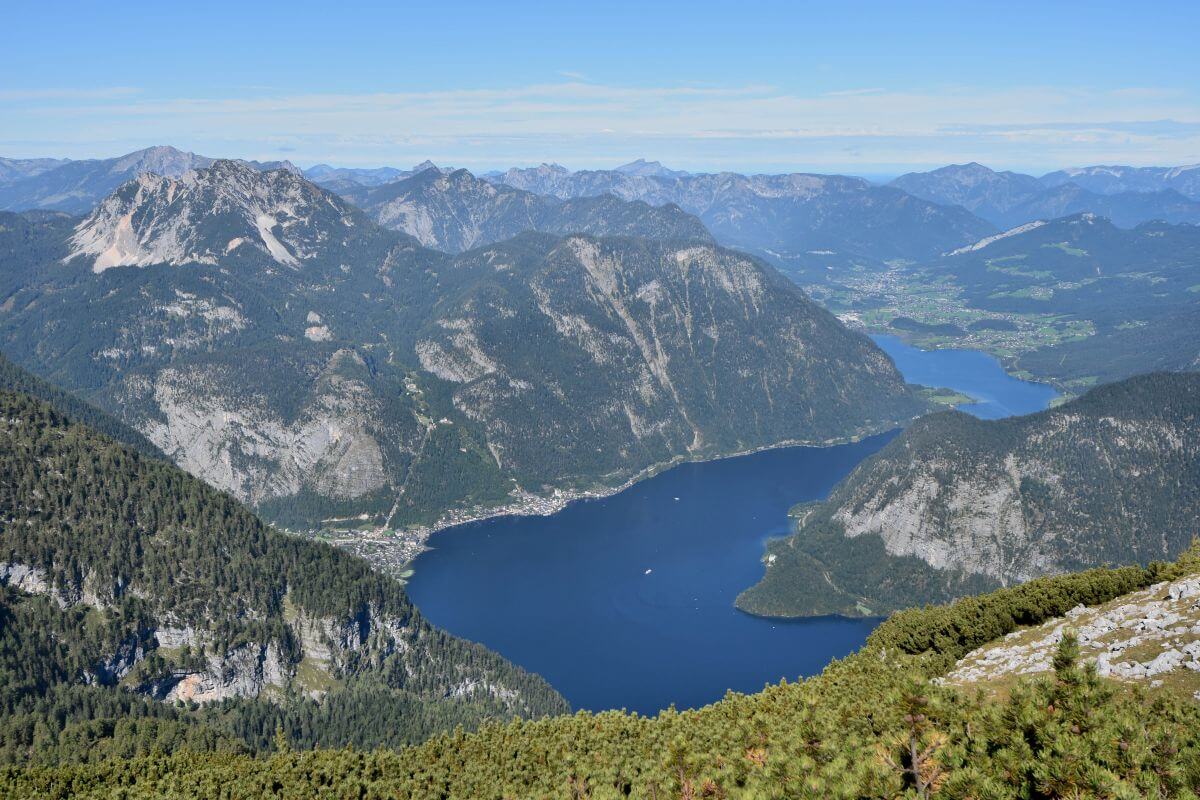
Skip Dachstein on cloudy days – its true beauty is the view. The mountain’s magic lies in its breathtaking views over Hallstatt and the Salzkammergut. When the peaks disappear in clouds or mist, you’ll miss what makes this place unforgettable. Save your visit for a bright day, when the Alps stretch endlessly beneath you.
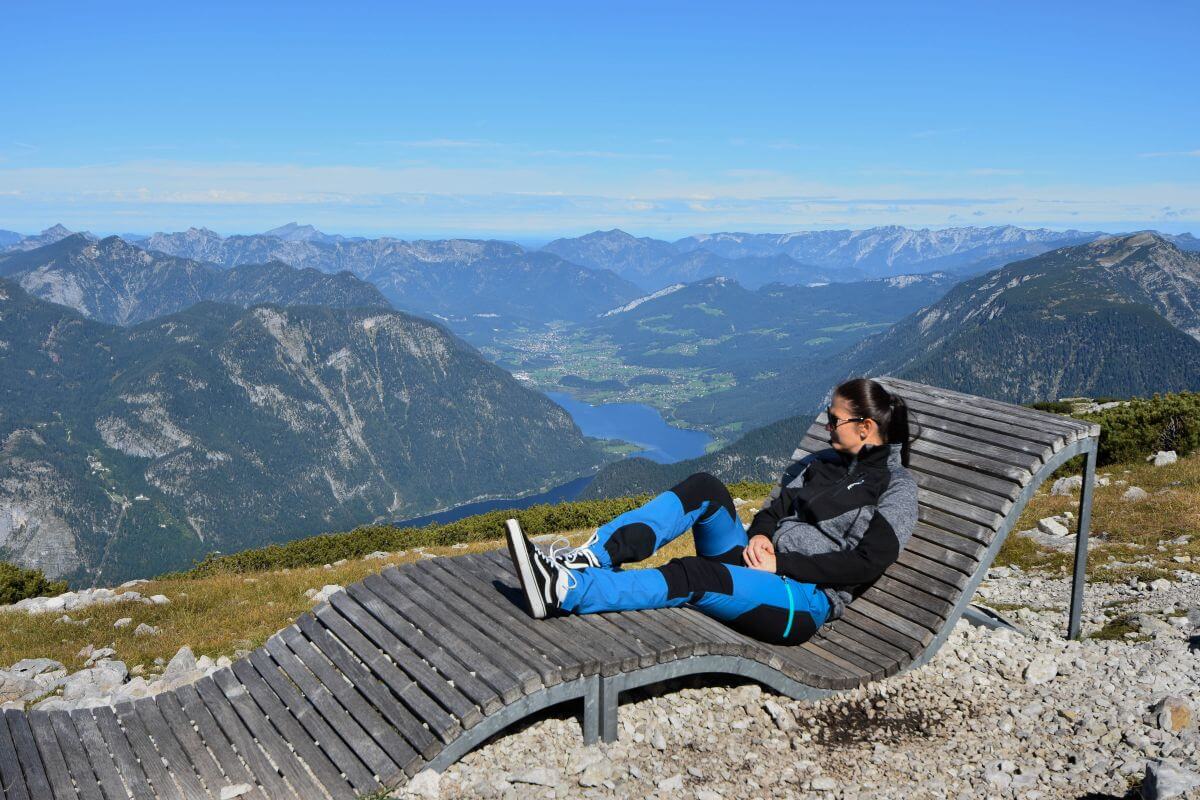
13. Dachstein Giant Ice Cave
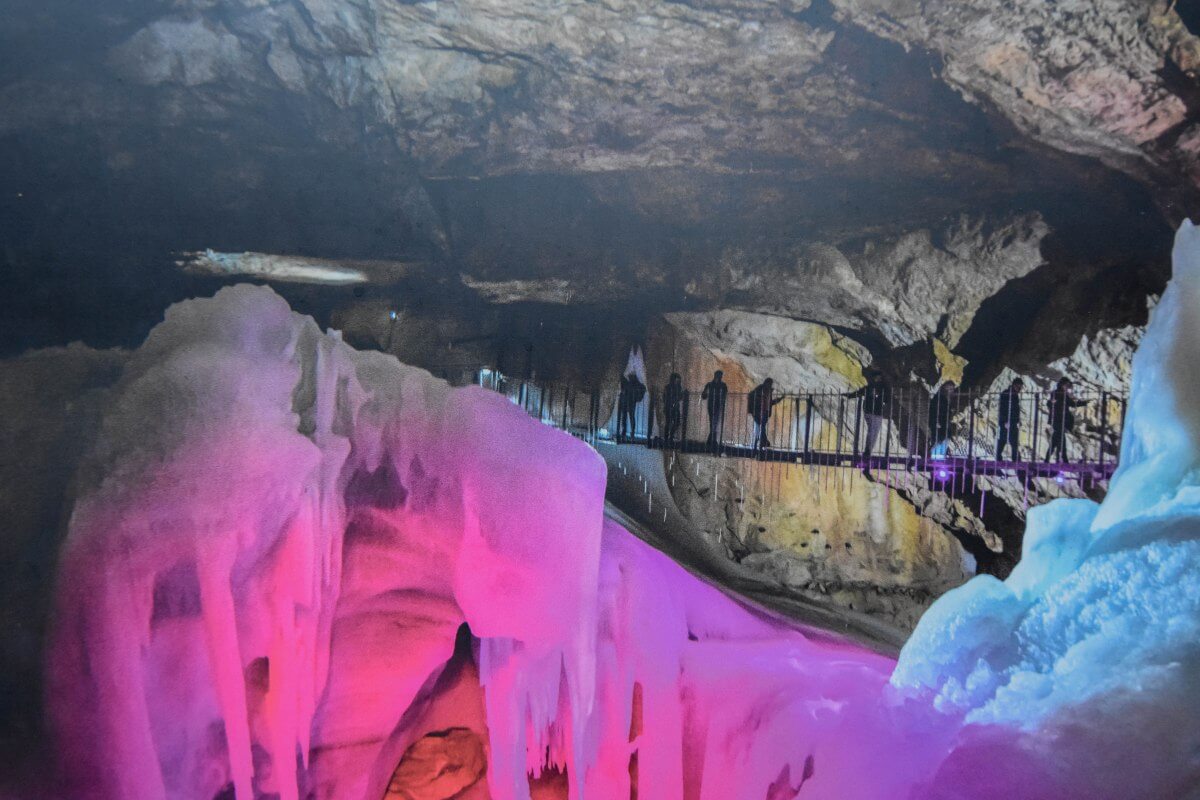
If heights aren’t enough, head underground into an entirely different world. Visit the Dachstein Giant Ice Cave, a natural wonder hidden beneath the Dachstein massif. Scientists believe the cave system began forming around 250 million years ago, while its ice formations date back thousands of years, according to the official website . This underground maze slowly shaped itself from limestone and meltwater. Over time, changing air currents and freezing temperatures built layers of ice. Dripping meltwater froze layer by layer, creating shimmering towers and frozen cascades that still grow and shrink with every season.
The Dachstein Giant Ice Cave is part of the UNESCO World Heritage-listed Dachstein–Salzkammergut region. It was first discovered in the early 1900s, and researchers later discovered Ice Age animal remains and traces of early visitors who used torches to light their path. Today, a guided tour lasting approximately 50 minutes takes you through extraordinary halls like the Parsifal Dome and the Cathedral of Ice. Modern lighting transforms the ancient formations into a glowing theatre, while guides explain the science behind each shape.
GOOD TO KNOW:
The entrance to the Giant Ice Cave sits above Obertraun. Reach the entrance via the Dachstein Krippenstein cable car to Schönbergalm station (station I), then follow the short uphill path. The temperature inside stays between –2 °C and 0 °C, so wear warm clothes and sturdy shoes. Combine a visit with the nearby 5 Fingers viewpoint and plan at least half a day for this adventure.
When to go to Hallstatt

Hallstatt changes mood with every season. With fewer than 800 residents and up to 10,000 visitors during the peak season, timing your visit makes all the difference.
Peak season runs from June to August, sometimes even to September. Days stretch long, the lake warms for swimming and other water activities, and trails lead through green forests to waterfalls. But here’s the catch – summer brings crowds.
This fairytale village may look peaceful online, but its biggest challenge is overtourism. Between 11 AM and 4 PM, crowds surge and parking fills quickly. By midday, the narrow lanes fill with thousands. Overtourism is visible. Bus tours once came without limit, and on peak days, up to 30,000 tourists used to squeeze into this small town. Since 2020, strict arrival slots and a daily cap have reduced numbers by half. Still, by 11 AM, you’ll queue for photos and search for quiet corners.
AVOID THE RUSH:

So, when is the best time to visit Hallstatt? For calmer days, come in April, May, the end of September, or October. These shoulder months keep all the charm with fewer crowds and lower prices. The weather is gentle, the air crisp, perfect for walks, and light shimmers across the lake in peace. Stay overnight to see the old town before 9 AM or after 6 PM when the day-trippers vanish.

In winter December to February, the village glows under snow. It’s calmer, romantic, and festive. Visit during Advent to catch the Krampus Run on December 4, 2025, or the Christmas Market on December 8, 2025.
GOOD TO KNOW:
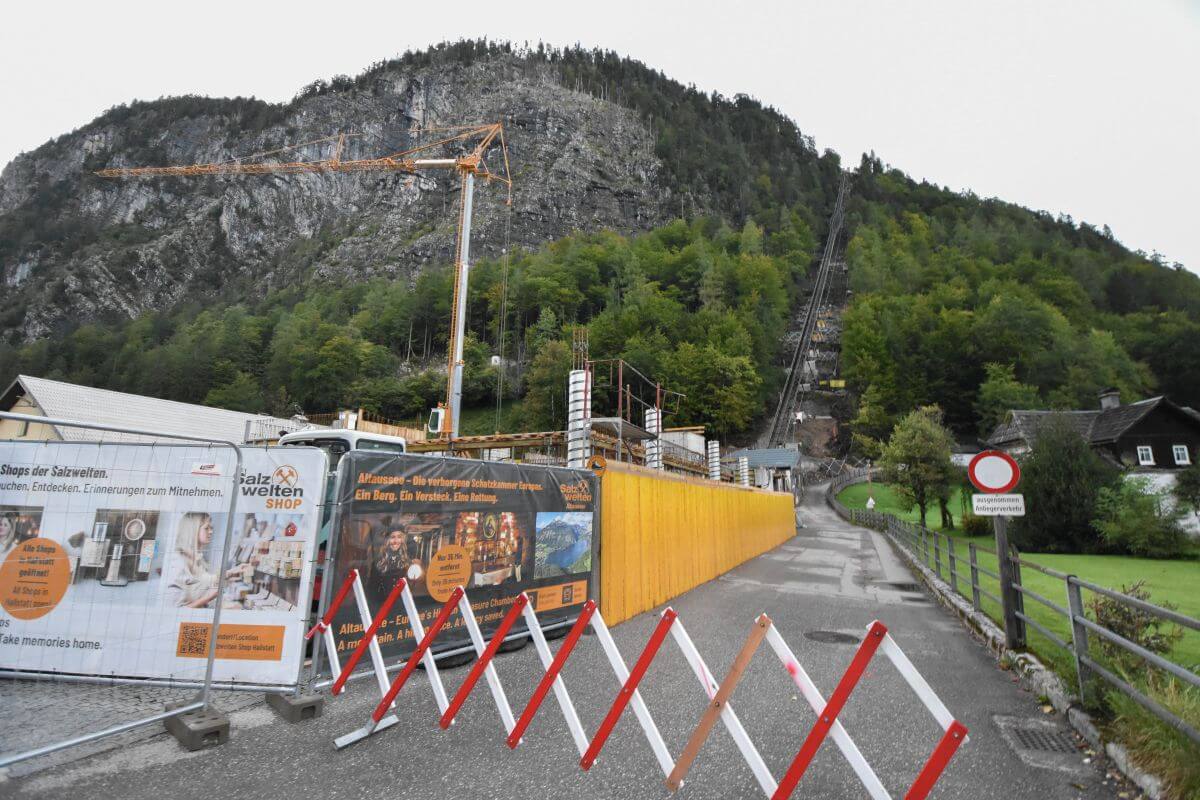
If you’re planning to take the funicular up to the Skywalk viewpoint and visit the village’s salt mine, plan your trip for summer 2026 or later. Both attractions above are closed for major reconstruction. After that, everything reopens brand-new, giving visitors the safest ride and the best views.

Now you know which Hallstatt attractions are worth your time!
Thank you for staying with us until the end! If you’ve enjoyed this article, please consider sharing this post to extend its reach.
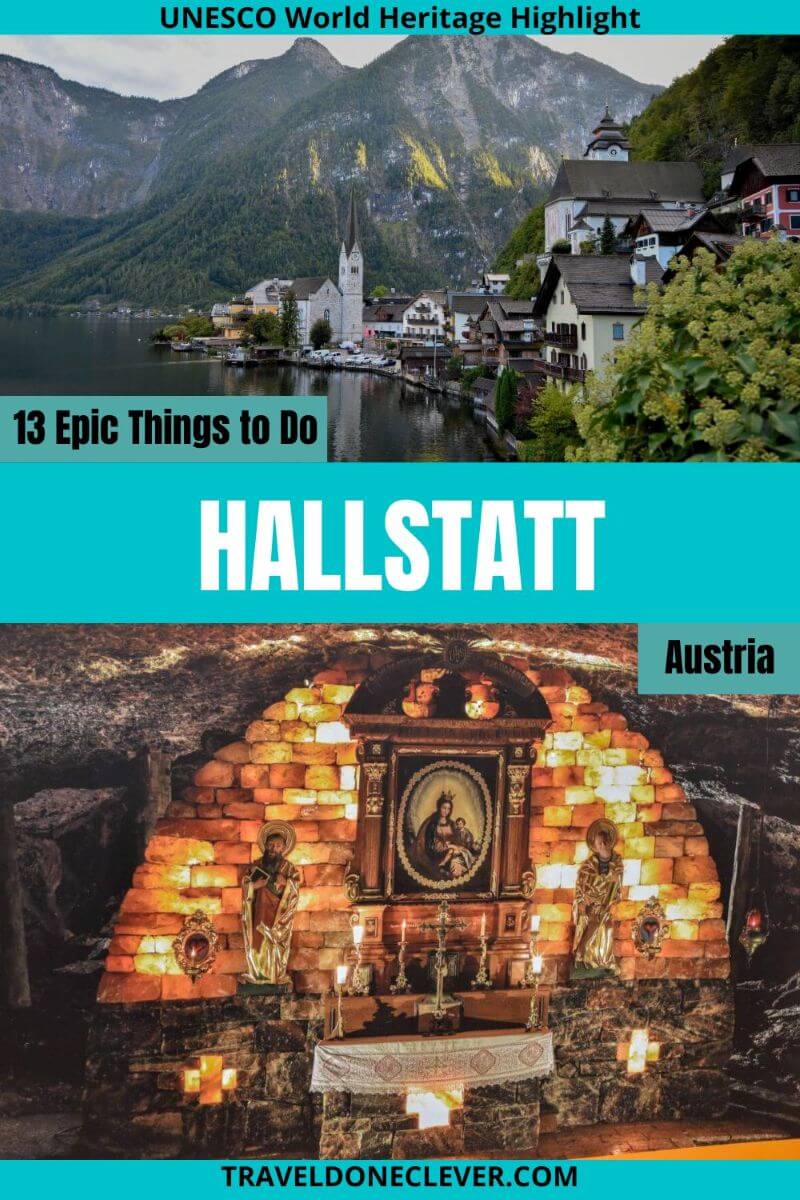
Have you ever visited this famous UNESCO-listed village in Austria? Which attraction surprised you the most? Let us know in the comments below!
Pin the best things to do in Hallstatt in Austria for later so you don’t lose it!
